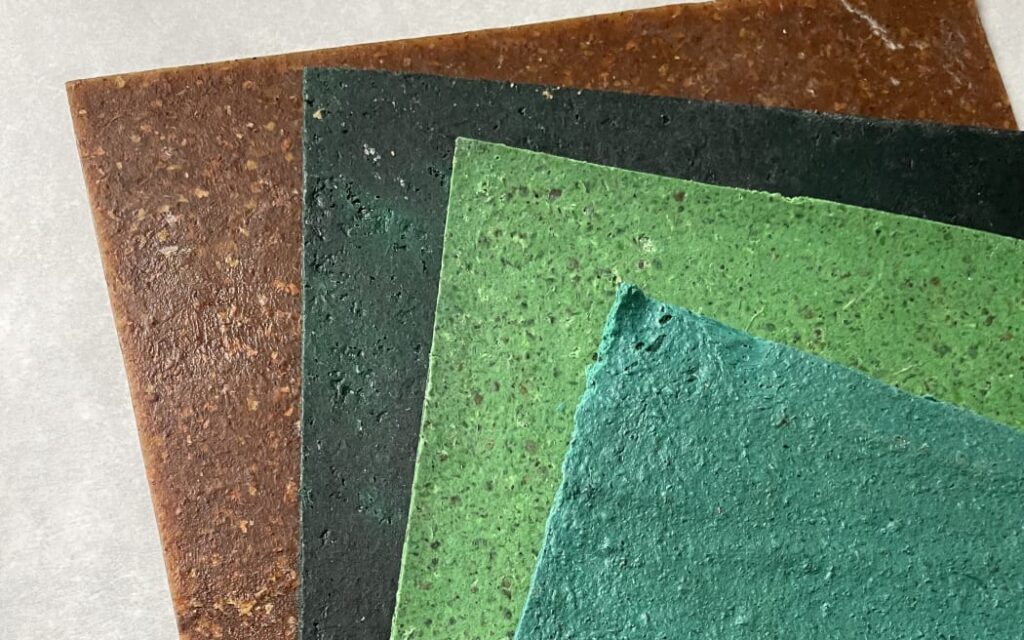Turning kiwifruit waste into high-end materials

Over the past three months, Scion researchers have been teaming up with KiwiLeather Innovations (KIL) to transform surplus kiwifruit into a sustainable alternative to vegan leather.
The concept was originally developed by Shelley Houston – a creative and baker – who began experimenting with kiwifruit waste in her kitchen during lockdown. With $60,000 in funding secured by KIL and an additional $180,000 from the Bioresource Processing Alliance (BPA), the project aims to develop a high-value application from a portion of the 50,000 tonnes of kiwifruit rejected annually.
“This project tackles two big problems,” says scientist Angelique Greene. “First, it helps reduce the huge volumes of fruit waste that don’t meet export standards or can’t be consumed locally. Second, it offers a better alternative to vegan leathers, which are often made with polyurethane or PVC – plastics that don’t break down and stick around in landfills forever.”
The Scion team is helping take Shelley’s original homemade version and turn it into something more durable and scalable, using the whole fruit to create items like purses, wallets and textiles. “The goal is for the final product to be over 90% biobased as well as biodegradable,” Angelique says.
“We’ve been refining the formulation to create a standard recipe that works at a larger scale. That includes improving strength, testing natural coatings and looking at what equipment would be needed for production.”
Scientist Kelly Wade says the project also taps into global momentum around sustainable textiles. “Fashion brands are under growing pressure to use more sustainably sourced materials, reduce waste and plan for what happens to materials at the end of their life. This project speaks directly to that, while also creating new value streams for New Zealand’s primary industries.”
Of course, developing a new material doesn’t come without its challenges. The team has been working through three main technical hurdles: sugar content, flexibility and durability, and water resistance.
“One of the tricky things is the high sugar content in the fruit,” says Angelique. “If it’s overprocessed, it can caramelise and stop the material from absorbing the other components in the formulation. We’ve worked around that by kiln drying the fruit pulp at a low temperature so that it maintains its original properties.”
To boost flexibility and reduce cracking, the team is experimenting with different vegan proteins like soy and pea. “These can help give the material more stretch,” explains Angelique. “We’re also looking into bio-based epoxy systems – for example, blending kiwifruit with epoxidised soybean oil or cashew nut resin – to create a version with slightly more plastic-like properties.”
Kelly highlights that durability can be improved by considering both the manufacturing process and the material’s structure. “For example, incorporating a fibrous backing into the film and ensuring it is uniform and well-integrated with that layer can significantly enhance strength and resilience.”
For water resistance, the team is trialling natural coatings that protect the material without compromising its ability to break down. “It’s all about balance,” Kelly says. “It has to perform well, but its impact on the environment also needs to be minimised.”
The project is due to wrap up in December and is already tracking well, with two of six milestones completed.
A big shoutout to the Scion team involved: Angelique Greene, Kelly Wade, Julio Botero, Gavin Durbin, Maxine Smith, Michelle Sloane, Sean Taylor and Robin Parr.
